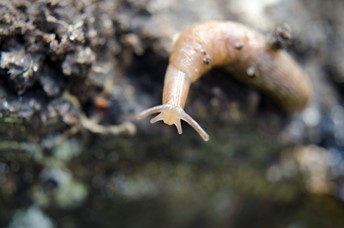
Slug watch… getting ready for action

A key step towards mitigating slug activity is to understand where, when and to what extent slugs are causing a problem by monitoring populations through the use of slug trapping.
The best time to assess slug populations is when the weather is mild and soil is damp, with the most effective method being to use refuge traps: each trap or shelter should consist of a tile, hardboard sheet or 25-30cm plant pot saucer which will provide a refuge underneath which slugs can gather. Each trap should be baited with a suitable food source (two heaped teaspoonfuls of chicken layer’s mash is recommended), but it is important not to use slug pellets for this purpose.
Slug pellets should only be applied once populations have reached threshold.
The traps allow free movement of slugs which are more likely to visit in mild and moist night-time conditions and stay until the following morning when they can be counted.
In each field, nine traps (13 in fields >20ha) should be set out in a W pattern, with the traps concentrated in areas known to suffer damage. The following thresholds indicate a risk when soil and weather conditions favour slug activity:

When, and only when these thresholds have been reached should a suitable molluscicide, such as Gusto® IRON be applied.
To find out more about integrated slug control visit the AHDB website.
Gusto® IRON: the obvious choice for cost-effective slug control
Gusto® IRON is a ready-to-use, pelleted bait containing 2.94% w/w anhydrous ferric phosphate. It is approved for use in a range of agricultural and horticultural crops and offers the following key benefits:
- A durable, persistent and palatable slug pellet for the control of all UK slug species
- Rainproof and with superior mould resistance
- Excellent colour retention for easy detection
- Uniform pellet size and density for accurate spreading to wide working widths
- Optimum baiting points of 45 pellets per m2 when applied at 5kg/ha
Latest Articles

Powering up slug control: the importance of mould resistance

Powering up slug control: pellet timing and baiting point density are critical

